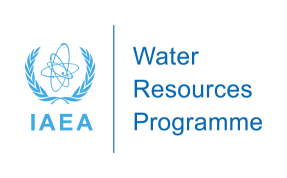Speaker
Ms
Josefina Hamutoko
(University of Nmaibia)
Description
The semi-arid Cuvelai Etosha Basin of northern Namibia is characterised by loamy to sandy soils, a short rainy season with precipitation between 250 and 600 mm/a, frequent alternation of droughts and flooding, high evapotranspiration rates and typical vegetation of mopane savanna and Zambezian dry deciduous forest. Groundwater is found in shallow perched aquifers and deeper multi-layerd aquifers.
The aim of this project is to understanding spatial and temporal variations of groundwater recharge from precipitation and surface run-off, evaporation from the soil and the shallow perched aquifers, and clarify if there is a significant inflow from the perched aquifers into the deeper aquifers.
In order to reach these objectives a broad variety of investigation approaches is combined, e.g., time series of hydrochemistry, stable isotopes, soil moisture and groundwater level, as well as chloride mass balance, pumping test and geophysical investigations to characterise the properties and the extend of the perched aquifers.
Currently some first isotopic data was obtained for precipitation for two stations in the basin (Eenhana and Oshanshiwa) with monthly rain collectors. There, δ18O ranged from -7.78‰ to -1.78‰ and δ2H ranged from -50.9‰ to -19.6‰ for the rainy season 2013/2014. Event samples were taken sporadically during the rainy seasons 2012/2013 at Outapi and Etope (δ18O ranged from -18.69‰ to +1.2‰ and δ2H ranged from -136.6‰ to -0.2‰) and also from 2008 to 2010 at various places in the basin (δ18O ranged from -11.98‰ to +5.94‰ and δ2H ranged from -88.6‰ to +42.8‰). A surface water sampling campaign in May 2014 (just after the end of the rainy season) along the ephemeral flood courses in the Cuvelai Etosha Basin revealed δ18O from -3.9‰ to +22.75‰ and δ2H ranged from -24.4‰ to 104.8‰ and the data are plotting a long an evaporation line (δ2H = 4.38 * δ18O + 3.96; with R2=0.96).
Groundwater from the perched aquifer was sampled from hand dug wells in 2014. During and shortly after the rainy season δ18O ranged from -6.89‰ to +9.4‰ and δ2H ranged from -53.8‰ to 31‰ and the data are plotting along a line given by δ2H = 7.5 * δ18O + 3.96 (R2=0.89) which is relative close to the meteoric water line for the study area. During the dry season δ18O ranged from -8.12‰ to +13.6‰ and δ2H ranged from -55.8‰ to 45‰. The data are plotting along a line given by δ2H = 4.57 * δ18O + 16.7 (R2=0.97) and resemble an evaporation line.
Based on the lines for the two different seasons an evaporation rate has been estimated.
To represent the deeper groundwater, a database has been compiled based on data from Geyh (1997), Margane et al. (2005), Lindenmaier & Christelis (2012) sampling campaigns by the BGR and MAWF and some additional sampling within this project. For the deeper groundwater, overall δ18O ranged from -9.52‰ to +1.4‰ and δ2H ranged from -67.6‰ to -42‰. The variance of these data cannot be explained by a single regression line but rather by various recharge areas, times and processes. However, the considerable difference in the isotopic composition of the deep groundwater and the shallow groundwater in the perched aquifer supports the idea different recharge ages.
References
Geyh, M. A. (1997): Hydrogeology and isotope hydrology of the Otavi Mountain Land and its
surroundings (Karst_01 and Karst_02) - Technical Cooperation Windhoek and Hannover.
Margane, A., Baeumle, R., Schildknecht, F., Wierenga, A. (2005): Investigation of Groundwater Resources and Airborne-Geophysical Investigation of Selected Mineral Targets in Namibia, Groundwater Investigations in the Oshivelo Region - Main Hydrogeological Report, BGR - Technical Cooperation Windhoek and Hannover.
Lindenmaier, F., Christelis G. (2012): Groundwater for the North of Namibia. - Summary
Report of Activities of Phase I - Exploration of Ohangwena II Aquifer and Preliminary Isotope Study - Part A.
Author
Ms
Josefina Hamutoko
(University of Nmaibia)
Co-authors
Mr
Christoph Lohe
(BGR)
Dr
Heike Wanke
(Uinversity of Namibia)
Mr
Marcel Gaj
(BGR)
Mr
Martin Quinger
(BGR)
Mr
Mathias Beyer
(BGR)
Mr
Nicco Masule
(MAWF)
Dr
Paul Koeniger
(BGR)

